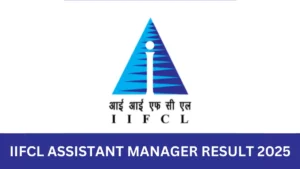Directions (1-5): Read the following information carefully and answer the questions that follow.
Twelve persons are sitting in two parallel rows containing six persons in each row. In row 1, P, Q R, S, T and U are sitting and all of them are facing north. In row 2, A, B, C, D, E and F are sitting and all of them are facing south. In the given seating arrangement, each member seated in a row faces another member of the other row but not necessarily in the same order.No two successive friends are sitting together according to alphabetical order. For Example: A does not sit with B; similarly B does not sit with C and so on. Each of them also likes different colours like red, blue, white, pink, yellow, cream, purple, green, brown, grey, violet and orange but not necessarily in the same order.
A sits third to left of E and none of them sits on the extreme end of the line. Immediate neighbor of A faces the person who likes orange colour. There is one person sits between the one who likes orange colour and U. Immediate neighbor of E faces T. Immediate neighbor of B faces S. Immediate neighbor of R faces the one who likes pink colour. There are two persons sit between the one who like pink and brown colour. D sits not adjacent to B. One of the immediate neighbor of A likes violet colour. There are two persons sit between the one who like violet and green colour. The immediate neighbor of one who likes green colour faces the one who likes grey colour. The one who likes purple sits third to right of one who likes cream colour. A does not like purple colour. The one who likes yellow sits on the immediate right of one who likes green colour. The immediate neighbor of one who likes yellow colourdoes not like white colour. A does not like white colour. The one who likes white colour faces the person who likes blue colour.
Q1. Q likes which of the following colour?
(a) cream
(b) orange
(c) white
(d) purple
Q2. Who among following likes red colour?
(a) P
(b) Q
(c) R
(d) S
(e) T
Q3. Who among following sits second to right of D?
(a) A
(b) E
(c) C
(d) B
(e) F
Q4. Four of the following five are alike in a certain way and hence they form a group. Which one of the following does not belong to that group?
(a) F
(b) U
(c) D
(d) T
(e) C
Q5. Who among following faces F?
(a) T
(b) R
(c) S
(d) Q
(e) P
Directions (6-10): Study the information and answer the following questions:
In a certain code language
“all that is known” is coded as “O13# Q8@ F19@ Y15#”
“into the crack between” is coded as “X22# W9# F19# Q13@”
“along with advice from” is coded as “T9@ Y23@ C18@ Y15#”
Q6. What is the code for ‘citizen’?
(a) W18#
(b) W19#
(c) W18@
(d) P18#
(e) None of these.
Q7. What is the code for “time”?
(a) F18@
(b) G18@
(c) F18#
(d) H18@
(e) None of these.
Q8. Which may be the possible code for “solving”?
(a)H12#
(b)G12#
(c) G12@
(d) G22#
(e) None of these.
Q9. What is the code for ‘symbol’?
(a) G2#
(b) G2@
(c) H2@
(d)G4@
(e) None of these.
Q10. What is the code for “country”?
(a) X12#
(b)W14#
(c) W12#
(d) W12@
(e) None of these.
Directions (11-15): Study the following information to answer the given questions:
A word and number arrangement machine when given an input line of words and numbers rearranges them following a particular rule in each step. The following is an illustration of input and rearrangement. (All the numbers are two-digit numbers and all are arranged as per some logic based on the value of the number.)
Input: through 84 against 15 the 93 wishes 42 of 36 main 57
Step I: against 83 through 15 the 93 wishes 42 of 36 main 57
Step II: wishes 41 against 83through 15 the 93 of 36 main 57
Step III: main 35 wishes 41 against 83through 15 the 93 of 57
Step IV: through 94 main 35 wishes 41 against 8315 the of 57
Step V: of 58through 94 main 35 wishes 41 against 8315 the
Step VI: the 16of 58through 94 main 35 wishes 41 against 83
Step VI is the last step of the arrangement the above input.
As per the rules followed in the above steps, find out in each of the following questions the appropriate steps for the given input.
Input: should 17 have 33 been 58 test 36 for 45 trial 24
Q11. How many steps are required to complete the above arrangements?
(a) four
(b) five
(c) six
(d) seven
(e) None of these
Q12. Which word/number would be at seventh position from the left end in step IV?
(a)trial
(b) 46
(c) test
(d) been
(e) 23
Q13. In step III, which of the following words would be at 5th position from the right end?
(a) 17
(b) have
(c) 33
(d) 45
(e) trial
Q14. In which step the elements ‘should 18 have’ found in the same order?
(a) Step V
(b) Step IV
(c) Step I
(d) Step II
(e) Step VI
Q15. Which element is exactly between “46 and 23” in Step V?
(a) test
(b) 35
(c) for
(d)been
(e) none of these
You may also like to Read:




 GA Capsule for SBI Clerk Mains 2025, Dow...
GA Capsule for SBI Clerk Mains 2025, Dow...
 The Hindu Review October 2022: Download ...
The Hindu Review October 2022: Download ...
 IIFCL Assistant Manager Result 2025 Out,...
IIFCL Assistant Manager Result 2025 Out,...





